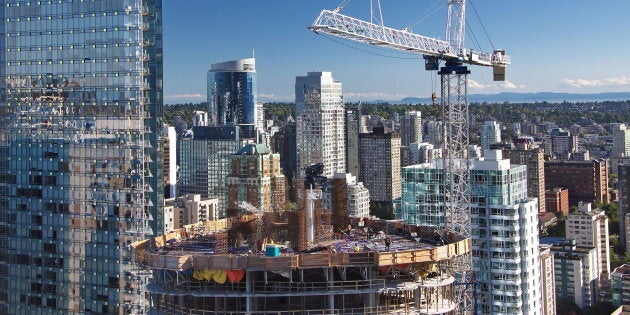
Ontario Premier Doug Ford became the latest Canadian leader last week to announce a plan to help alleviate the growing affordable housing crisis.
The plan reads like a checklist of requests from the province's real estate development industry, focusing on such issues as cutting red tape for builders and making it easier for developers to push through unpopular projects. Critics argue it especially helps out big developers.
And it basically amounts to the same thing as most other housing-affordability plans introduced in Canada recently: Not much. Essentially, nibbling at the edges of a large problem.
Watch: Canada's high house prices could hurt the job market. Story continues below.
Our housing affordability crisis isn't just the result of some fleeting, easy-to-identify problems like foreign buyers flooding the market with cash or lenders handing out too much money — although that is part of it for sure.
They are also the result of long-term trends that have shifted the way housing is delivered in this country. Here are a few of the things we could do to change those trends — and the reasons why we probably won't.
'De-zone' the suburbs
This is an idea that both urban planners and Canada's developers are getting behind. Unlike other parts of a city, suburbs are inflexible. Strict zoning means that, while urban areas can transform to serve new purposes as cities change, suburbs stay the same.
Today, even in the country's most booming cities, suburban neighbourhoods are depopulating as the baby boomers who occupy those homes slowly age. Meanwhile, the next generation of homebuyers are being squeezed into tiny condos next to freeways or rail yards.
The solution, proponents say, is to de-zone the suburbs and allow at least some "gentle densification" in single-family home areas, that would allow the construction of townhomes and low-rise apartment buildings.
Earlier on HuffPost Canada:
But go ahead, tell homeowners in idyllic suburban neighbourhoods that the deal they thought they were getting is no more, and their neighbourhoods are about to be rebuilt as urban enclaves.
And ending suburban zoning will only be more difficult as house prices rise. Someone who paid $1 million for a suburban bungalow will likely fight much harder to keep their "quality of life" intact, compared to someone who paid a lower, more affordable price for their home. The political pitfalls here are obvious.
Allow more suburban sprawl
If you can't urbanize the suburbs, well, you can always build more of them. Proponents of the New Urbanism will tell you suburbs are a bad idea: They're an inefficient and wasteful burden on municipal services; they kill any hopes of mass public transit; they can be isolating to people living alone; and they preclude the creation of the sort of mixed-use neighbourhoods that make for sustainable, flexible cities.
But the research is clear: cities that allow unlimited sprawl have cheaper housing than cities with hard limits (either geographic or political) on where homes can be built. And research also shows cities with limits on sprawl are more prone to housing bubbles, because a hard limit on developable land attracts speculators.
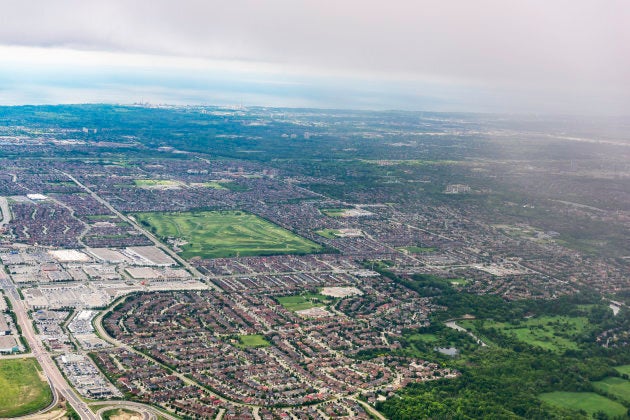
But sprawl is passé these days. Ontario has a Green Belt around Greater Toronto, in an effort to stop the paving-over of Canada's most fertile farmland; Vancouver is physically limited by mountains and ocean; and other cities have put in anti-sprawl measures to one degree or another.
There is not much political appetite for changing this trend. Just look at how quickly Doug Ford had to backtrack on a proposal to allow some limited development in the Green Belt. Sprawl is unlikely to make a comeback.
Reduce immigration levels
A growing number of analysts have been noting lately that Canada's recently-increased immigration targets are putting more pressure on the housing market.
All things being equal, immigration shouldn't raise house prices — so long as the supply of new homes matches the increased demand. But this doesn't seem to be happening right now. With the recent slowdown in home sales, developers are cutting back on future plans — even as population growth is accelerating. Low-income households will likely feel it most, and policymakers know it.
"Toronto will experience accelerated population growth over the next 20 years and vulnerable groups and low- and moderate-income households will experience increased difficulty accessing suitable and affordable housing," a city report predicted last year.
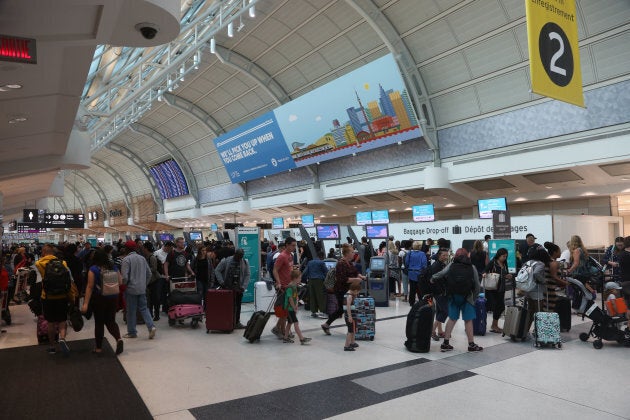
So, if we wanted to, we could cut immigration levels to reduce population growth and allow the housing supply to catch up.
But Canada is experiencing a historically huge labour shortage, and the only short-term solution is to import labour. Not doing so could threaten our economy. Just look at Quebec, whose new CAQ government ran on a promise to cut immigration levels. They did so, and less than a year later, they're planning to raise immigration levels back again. The province's labour shortage is just too much.
Build large-scale community housing
Part of what made home ownership affordable in Canada in the post-war boom years was the construction of large-scale community housing projects, financed by taxpayers. It meant that a significant chunk of residents, those at the lower end of the income ladder, simply weren't in the "free market" for housing, reducing demand and helping to keep prices in check.
We stopped building those large-scale projects back in the 1970s, and there is now a five- to seven-year wait list for subsidized housing in Toronto.
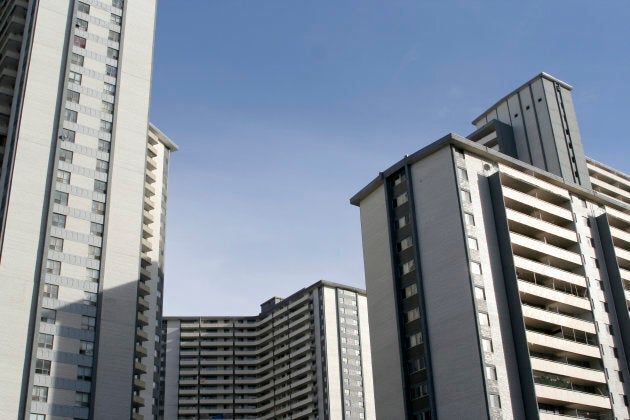
So we could start building serious quantities of subsidized housing again. But have you seen the cost of land in urban Canadian areas these days? It would be far more expensive than those projects built half a century ago, and the political payoff for our municipal leaders is uncertain.
Bring back incentives to build rental housing
So if we can't build government housing on a mass scale, at least we could get more rental apartments built, right?
Up until the 1980s, Canada heavily subsidized the construction of rental apartments, in the form of tax breaks and other incentives. This is why most Canadian cities are covered in those modernist, concrete or brick apartment buildings from the 1960s and 1970s. Many experts say this supply of rental housing is one reason why housing remained affordable in Canada during a time when its population was booming.
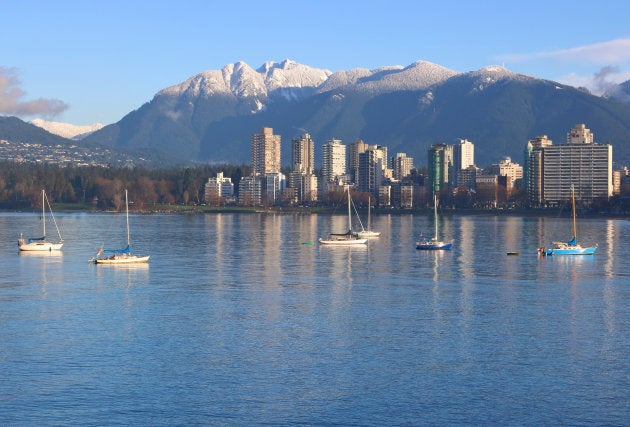
But since the 1990s, Canada hasn't subsidized rental housing construction very much, and pretty much the only multi-unit dwellings developers have built since then have been condos. They have much fatter profit margins, and the cost of building them can be recovered much faster.
Consider this: About 35 per cent of Toronto's population rents, but only six per cent of the housing supply added between 2011 and 2016 was rentals.
But incentives to build rentals — ones that actually would work — would be very expensive. They would need to cover the large and growing gap between the amount of money a developer would make from selling individual condo units, versus selling a whole building to a landlord who would need 20 to 30 years to recover the cost. Are we willing to throw billions at rental incentives? Seems unlikely.
Actually limit the amount of money being lent to buyers
There are many different reasons why house prices may rise or fall, but there is one hard limit to how high prices can go, and that's determined by the amount of money mortgage lenders are willing to put into a market.
Over the past decade, Canada has taken a number of steps to cool off excessive lending, including reducing the maximum amortization on an insured loan to 25 years, and the more recent mortgage stress test.
But we could take a more direct step, and simply limit the amount of money banks can lend, for instance by setting a strict loan-to-income ratio. This would link mortgage size directly to peoples' incomes, instead of interest rates.

The industry would no doubt complain that this is yet another measure that makes it harder to get on the property ladder, and the banks would likely scream bloody murder.
Canada's banks have become addicted to mortgage lending, with home loans going from less than 10 per cent of banks' lending books in the 1970s, to more than 40 per cent today. Mortgages are safe, long-term sources of revenue, so why bother with anything else? Just keep getting homebuyers further into debt and all will be OK.
Limiting home lending will only happen if we get political leadership that feels like fighting Canada's entire housing-addicted financial system.
Whatever we choose to do, we will find ourselves at odds with some aspect of today's Canada. Our desire to build sustainable cities; our economic reliance on high levels of immigration; the commodification of our housing supply — all of these are aspects of our housing affordability problem.
Fixing it will mean asking ourselves a tough question: What cost are we willing to pay for lower house prices?
Got any suggestions for what Canada could do? Let us know in the comments below.